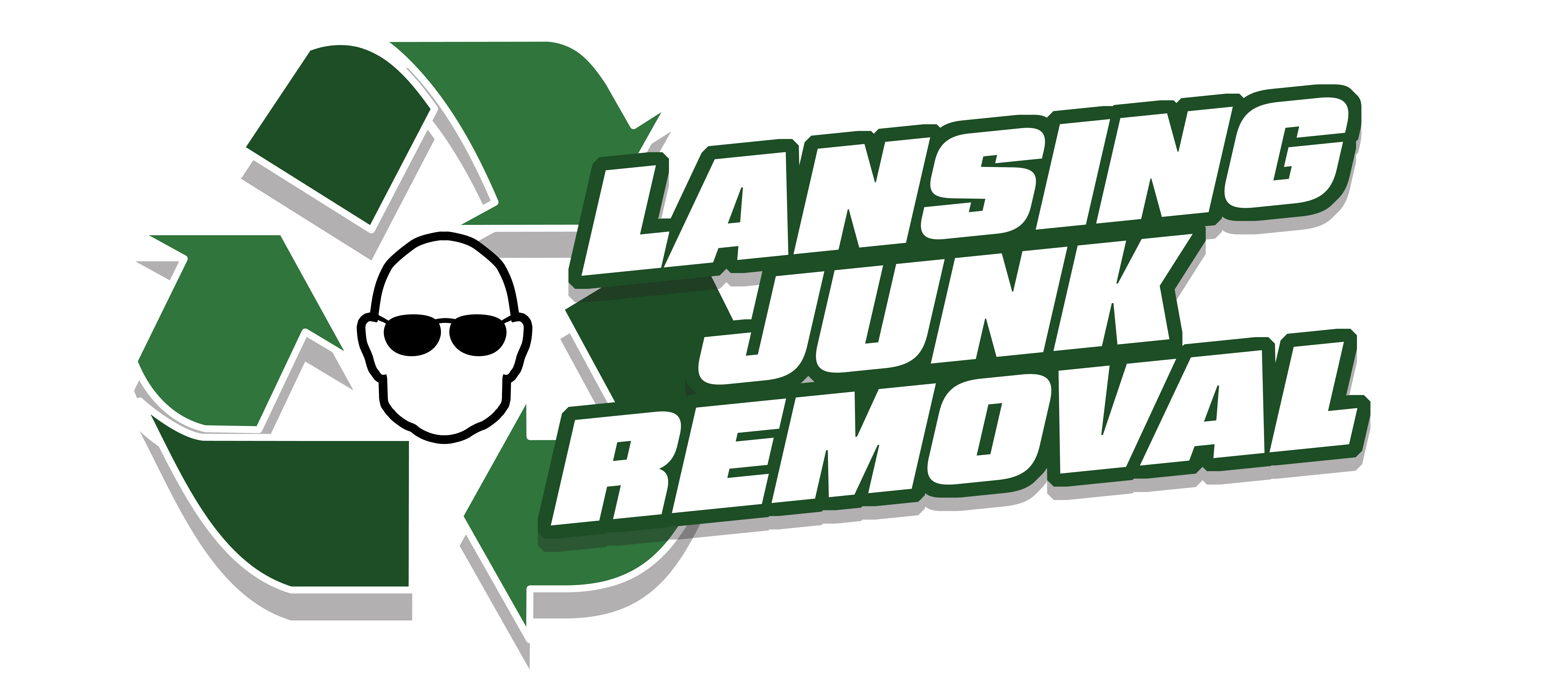The final weeks of spring semester at Michigan State University transform East Lansing into what locals affectionately call “furniture city.” That cheap futon that served as both couch and guest bed? It’s now perched precariously on the curb alongside mini-fridges, forgotten textbooks, and the remnants of dorm life. As thousands of students bid farewell to their temporary homes, they leave behind a tsunami of discarded possessions that washes over the community.
Table of Contents
- The Annual Move-Out Rush
- Planning Ahead for Move-Out Waste
- What Students Typically Discard
- Environmental Impact of Move-Out Waste
- Professional Junk Removal Services
- Donation Opportunities
- Frequently Asked Questions
The Annual Move-Out Rush
Drive through the neighborhoods surrounding MSU during late May, and the scene tells the same story year after year. Dumpsters overflow with the evidence of hasty departures – the IKEA bookshelf that didn’t survive its second reassembly, the string lights that once brightened countless college memories, and the mysterious collection of kitchen gadgets most students never actually learned to use.
Property managers watch this annual exodus with a mix of resignation and dread. Mark, who manages several apartment buildings near Grand River Avenue, describes it as “controlled chaos at best.” He’s seen everything from abandoned aquariums (complete with fish) to a full-sized piano left behind without explanation. The cleanup costs eat into profits, and the race to ready units for incoming tenants grows more frantic every year.
 Planning Ahead for Move-Out Waste
Planning Ahead for Move-Out Waste
The savvy student knows that move-out planning begins long before finals week. Sarah, a graduating senior who’s navigated three previous move-outs, learned this lesson the hard way: “Freshman year, I waited until the last minute and ended up abandoning half my stuff because I couldn’t find anyone to take it. Now I start listing things on Facebook Marketplace a month early.”
For parents helping with the move-out process, the experience can be equally shocking. Many arrive with vehicles far too small for the surprising volume of possessions their children have accumulated. What started as a carload of essentials in September has mysteriously multiplied into a small warehouse of items by May.
Smart property managers have begun integrating move-out guidance into their regular tenant communications. Some, like Cedar Village Apartments, now send monthly countdown emails starting 90 days before lease end, each containing practical tips and local resources for responsible disposal. Students can check the City of East Lansing’s bulk item collection program for guidelines, though these services fill up quickly during peak periods.
The most prepared residents book professional junk removal services weeks in advance, securing their spot before the last-minute rush drives up prices. Those who’ve experienced the frantic search for available services during finals week don’t make the same mistake twice. As one local hauler puts it: “We’re like snowplows after a blizzard during move-out week – everyone needs us at exactly the same time.”
What Students Typically Discard
The archaeology of student move-out reveals fascinating layers of college life priorities. The bottom layer often consists of furniture with stories to tell – like the notorious “free couch” that migrated through three different student apartments before finally meeting its end. These bulky items form the backbone of move-out waste, too large for standard disposal and too worn for many secondhand markets.
Kitchen areas yield their own treasure trove of abandoned possessions. The cupboards that once housed ambitious cooking plans now surrender collections of mismatched plates, the pasta maker used exactly once, and enough plastic cups to supply a small restaurant. Parents might recognize these items as the very kitchen supplies purchased during that optimistic pre-freshman Target run.
Closets reveal the evolution of student fashion priorities and the reality of limited storage. Winter coats that served faithfully through brutal Michigan winters get left behind by students heading to warmer climates. The professional clothes purchased for that one career fair or internship interview hang forgotten once their purpose is served.
Technology represents perhaps the most valuable category of discarded items. The printer that proved less necessary than expected, gaming consoles replaced by newer models, and computer peripherals that never quite made it into regular use find themselves seeking new homes. These electronics contain both monetary and environmental value that savvy disposal can reclaim.
Even food becomes part of the move-out equation. The sudden realization that an entire pantry and refrigerator need emptying leads to creative meals during finals week, but inevitably results in perfectly good food finding its way to dumpsters rather than donation centers.
Environmental Impact of Move-Out Waste
Behind the visible mess of move-out season lies a deeper environmental story. That abandoned futon doesn’t simply disappear when the garbage truck pulls away – it begins a journey that impacts the community’s environmental footprint for years to come.
When perfectly usable items enter the waste stream, they create a double environmental burden: the wasted resources from their original production and the new environmental costs of manufacturing replacements. A single discarded desk chair represents petroleum for plastic components, metal mining for the frame, fabric production, manufacturing energy, and transportation fuel – all multiplied by thousands of similar items each move-out season.
The worst offenders are electronics, which harbor a troubling mix of valuable materials and potential toxins. The Michigan Department of Environment, Great Lakes, and Energy warns that improper disposal of items like laptops, phones and gaming systems introduces harmful chemicals into soil and water while wasting recoverable precious metals. When that forgotten printer sits in a landfill, it leaches problem compounds for decades while its recyclable components go to waste.
Local waste management professionals witness this environmental toll firsthand. “We see perfectly good items destroyed by weather because they were left outside during move-out rain,” explains one local hauler. “Once things get wet or damaged, recycling and donation options disappear, and the landfill becomes the only destination.”
 Professional Junk Removal Services
Professional Junk Removal Services
When the reality of move-out logistics hits home, many turn to the superheroes of the season – professional junk removal teams who arrive with trucks, muscle power, and disposal know-how. For exhausted students and anxious property managers alike, these services transform overwhelming piles into empty spaces with remarkable efficiency.
The process typically begins with a panicked phone call: “How soon can you get here? My lease ends tomorrow!” Fortunately, experienced junk removal specialists have weathered enough move-out seasons to remain unflappable amid the chaos. A quick assessment, often available through photos texted to the company, produces an estimate based on truck space rather than confusing weight calculations.
On arrival, these teams perform what seems like magic to many customers. The couch that four students struggled to move upstairs somehow gets navigated down narrow hallways by experienced handlers. Items too large for doorways get expertly disassembled. The mountain of discards that appeared impossible to transport vanishes into carefully packed trucks.
The value extends beyond simple hauling. Professional teams bring skilled sorting eyes that rescue reusable items from landfill destiny. “We can tell immediately what Goodwill will accept versus what needs recycling,” explains a veteran removal specialist. “After years of working with donation centers, we know their standards and can route items to the right destinations.”
For property managers juggling multiple unit turnovers, these services prove invaluable. The ability to schedule cleanup immediately after tenant departure means faster unit preparation for incoming residents. Some companies even offer property management packages with priority scheduling during peak season and volume discounts for multiple units.
Donation Opportunities
Behind every move-out season exists a parallel universe of opportunity – where one student’s discarded lamp becomes another family’s reading light, and abandoned kitchen supplies find new purpose in someone’s first apartment. This magical transformation happens through donation channels that thrive during university transition periods.
Local charitable organizations prepare for the annual influx like squirrels before winter. Their trucks make frequent runs through student neighborhoods, rescuing still-useful items before weather damage renders them unusable. Organizations like Goodwill, The Salvation Army, and St. Vincent de Paul become matchmakers between departing students and community members seeking affordable necessities.
The most successful donation efforts make giving as convenient as discarding. MSU’s own “Pack Up. Pitch In.” program strategically places collection sites in residence halls and high-traffic areas, capturing donations before students default to dumpsters. These programs transform potential waste into community resources while giving departing students the satisfaction of knowing their belongings found new purpose.
Food donation represents another bright spot in move-out season. Local food pantries welcome those unopened packages of pasta, canned goods, and snacks that won’t survive the trip home. One local pantry reported receiving nearly 800 pounds of perfectly good food during last year’s move-out period – nourishment that would have otherwise gone to waste.
For those coordinating larger move-outs, many junk removal companies offer donation delivery as part of their services. They’ve developed relationships with local organizations and understand which items meet donation standards, providing documentation for tax purposes while ensuring usable goods reach those who need them most.
Frequently Asked Questions
How far in advance should junk removal services be scheduled during university move-out season?
The golden rule of move-out season: book early or pay premium prices. For May and June departures near MSU, smart students and property managers secure services 2-3 weeks ahead. The busiest period – the final two weeks of May – sees most companies completely booked, with some offering waitlist options for desperate last-minute customers. Those who plan ahead not only guarantee service but often access early-bird pricing before demand drives rates higher.
What items cannot be handled by standard junk removal services?
Even the most accommodating junk removal teams have limitations. Hazardous materials top the no-go list: paint cans with remaining liquid, automotive fluids, chemicals from science experiments, batteries, and certain electronics containing mercury components. Medical waste, propane tanks, and asbestos-containing materials also require specialized handling beyond standard services. When in doubt, asking ahead prevents the disappointment of having items refused during pickup.
How can property managers reduce move-out waste issues?
The savviest property managers have transformed their approach from reactive cleanup to proactive waste prevention. Their winning strategies include creating detailed move-out guides with local disposal resources, hosting pre-move-out information sessions, establishing on-site donation collection areas during peak departure days, and arranging building-wide junk removal services at group rates. Some even offer incentives like partial deposit returns for units left in “donation-ready” condition rather than requiring completely empty spaces.
What happens to furniture collected by junk removal companies?
That bedroom set’s journey doesn’t end when the junk removal truck drives away. Items in good condition typically find new homes through donation partnerships with local charities. Furniture with fixable damage might visit repair workshops before entering secondhand markets. Wood components from beyond-repair items often become recycled materials for manufacturing or landscape products. Metal components get sorted for scrap recycling. Only items that fail all recovery options – typically less than 30% of collected furniture – make the final journey to landfills.
Are there any student discounts available for junk removal services?
The budget-conscious student should absolutely ask about discounts before booking. Many local companies offer 10-15% reductions with valid student ID, recognizing both the financial constraints of their student customers and the value of building loyalty with future homeowners. The biggest savings come through group bookings – when multiple roommates or neighboring apartments coordinate service on the same day, companies often provide significantly reduced rates since their travel and logistics costs decrease. Some companies even run “fill the truck” promotions where multiple customers share truck space and costs.


